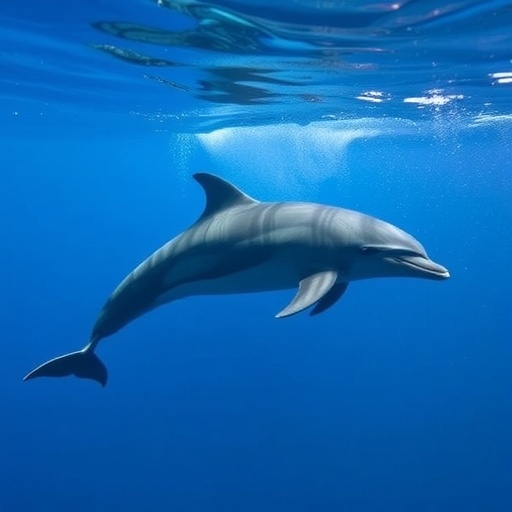A comprehensive new study analyzing over five decades of cetacean strandings along the Italian coastline has revealed that one in every eight stranded animals exhibits clear signs of interaction with fisheries, underscoring a critical and persistent threat to these marine mammals. Focusing primarily on bottlenose and striped dolphins, this research sheds light on the extensive and multifaceted impacts of fishing activities on cetacean populations in the Mediterranean Sea, revealing troubling patterns that have persisted from 1986 through 2023.
The study draws from an unprecedented dataset, encompassing more than 5,000 cetacean strandings recorded over nearly 40 years. This temporal breadth allowed researchers to analyze long-term trends and evaluate the nature and extent of fishery-related trauma with a degree of resolution rarely achievable in marine mammal research. By meticulously documenting physical injuries and entanglements, the team was able to categorize and quantify specific types of fishery interactions, providing new insights into this complex human-wildlife conflict.
Among the key findings are detailed observations on several distinct forms of fishery impact. Evidence of by-catch—where animals become unintentionally caught in fishing gear—is prevalent, indicating chronic incidental capture of these species. Physical signs such as net marks and penetration wounds suggest episodes of entanglement and interaction with active fishing equipment. Moreover, the presence of fishing gears detected on or within stranded individuals reveals additional layers of fishery interference, including ingestion of discarded hooks and lures, which can have severe internal consequences.
The study highlights laryngeal entanglement as a particularly alarming phenomenon observed in some stranded cetaceans. This form of injury occurs when fishing lines or nets become tightly wrapped around the larynx, potentially leading to suffocation or chronic respiratory distress. Researchers also documented amputations and other severe wounds that not only cause immediate distress but could signify prolonged suffering prior to stranding or death. These observations underscore the complexity and severity of fishery impacts beyond mere by-catch mortality.
Importantly, bottlenose and striped dolphins emerged as the most affected species. Their coastal distribution and behavioral ecology likely increase their vulnerability to fisheries. The study suggests that these species’ proximity to fishing hotspots may expose them to higher risks of entanglement and injury. This finding carries crucial conservation implications, as these dolphins are integral components of Mediterranean marine ecosystems and are culturally and ecologically significant.
The authors of the study emphasize the need for improved monitoring and mitigation strategies to address this ongoing issue. Despite decades of data, the persistence of fishery-related injuries signals inadequacies in current management practices. Strategies such as gear modifications to reduce entanglement risk, spatial or temporal fishing restrictions, and enhanced observer programs could help minimize cetacean by-catch and physical harm. The research advocates for collaborative efforts between fisheries, scientists, and conservationists to implement effective solutions.
Methodologically, the research involved detailed necropsies and pathological analyses carried out by an interdisciplinary team, ensuring robust interpretations of wound etiologies and interaction causes. The utilization of consistent diagnostic criteria across the extended temporal scale strengthened the reliability of results. This approach also allowed the team to distinguish between injuries associated directly with fishing gear and those resulting from other anthropogenic or natural factors.
The study further contributes to a growing body of evidence highlighting the global scale of fishery interactions affecting marine megafauna. While cetacean by-catch and injuries have been documented worldwide, the Mediterranean Sea represents a critical hotspot due to its high biodiversity, intense fishing activity, and increasing human pressures. The Italian coastline, with its complex maritime landscape, serves as a valuable case study to understand risks that may be mirrored in other regions.
By cataloging various types of fishery interactions—including ingestion, net marks, and penetrating wounds—the research enhances understanding of the spectrum and severity of direct anthropogenic threats faced by cetaceans. It also warns that these injuries might often remain unnoticed in live animals, only becoming apparent upon stranding and examination. This underlines the importance of stranding networks as indispensable tools for marine mammal conservation and threat assessment.
Beyond documenting injuries, the research implicitly calls attention to the broader ecological consequences of fishery interactions. Sublethal effects such as impaired feeding ability, respiratory distress, or chronic infections resulting from wounds have cascading impacts on individual health, reproductive success, and ultimately population viability. These findings resonate with global conservation challenges where human activities increasingly intersect with vulnerable wildlife.
As Mediterranean fisheries continue to evolve amid changing regulatory frameworks and technologies, ongoing surveillance remains essential. This study provides a critical baseline against which future patterns of fishery-cetacean interactions can be compared. It also offers a scientific foundation for policymakers seeking to balance sustainable fisheries with marine biodiversity conservation in one of the world’s most environmentally important seas.
The research concludes with a call for enhanced public awareness regarding the unintended consequences of fishing, urging that preserving cetacean populations requires integrated approaches that consider ecological, economic, and social dimensions. Protecting these charismatic marine mammals is not only an ethical imperative but also vital for sustaining healthy marine ecosystems that support fisheries and coastal communities alike.
In sum, this landmark investigation elucidates the persistent, multifaceted nature of fishery interactions with cetaceans along the Italian shoreline. It paints a compelling picture of species at risk, the physical scars they bear, and the urgent need for concerted conservation action. As pressures on marine ecosystems intensify, studies such as this illuminate pathways toward coexistence and stewardship in our shared ocean environment.
Subject of Research: Fishery interactions and their impact on cetaceans stranded along the Italian coastline from 1986 to 2023.
Article Title: Assessing fishery interaction on cetaceans stranded along the Italian coastline between 1986 and 2023.
News Publication Date: 17-Sep-2025.
Web References: http://dx.doi.org/10.1371/journal.pone.0330441.
Image Credits: Pietroluongo et al., 2025, PLOS One, CC-BY 4.0.
Keywords: cetaceans, fishery interaction, by-catch, Mediterranean Sea, bottlenose dolphin, striped dolphin, entanglement, marine mammal conservation, anthropogenic threats, stranding data, fishing gear injuries, marine biodiversity.




